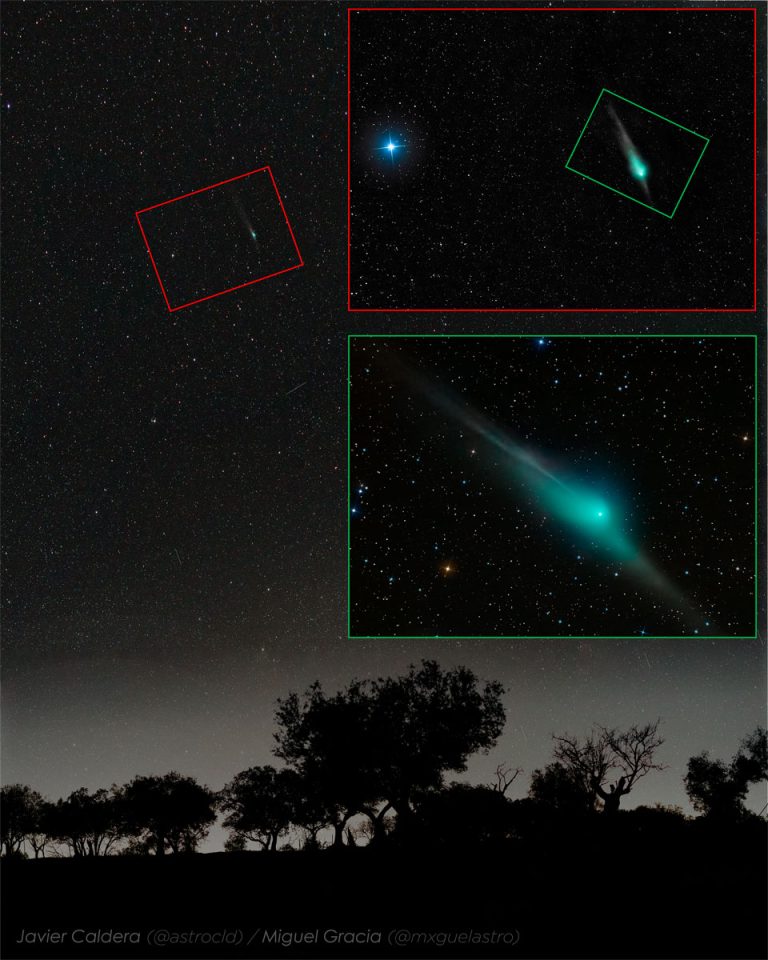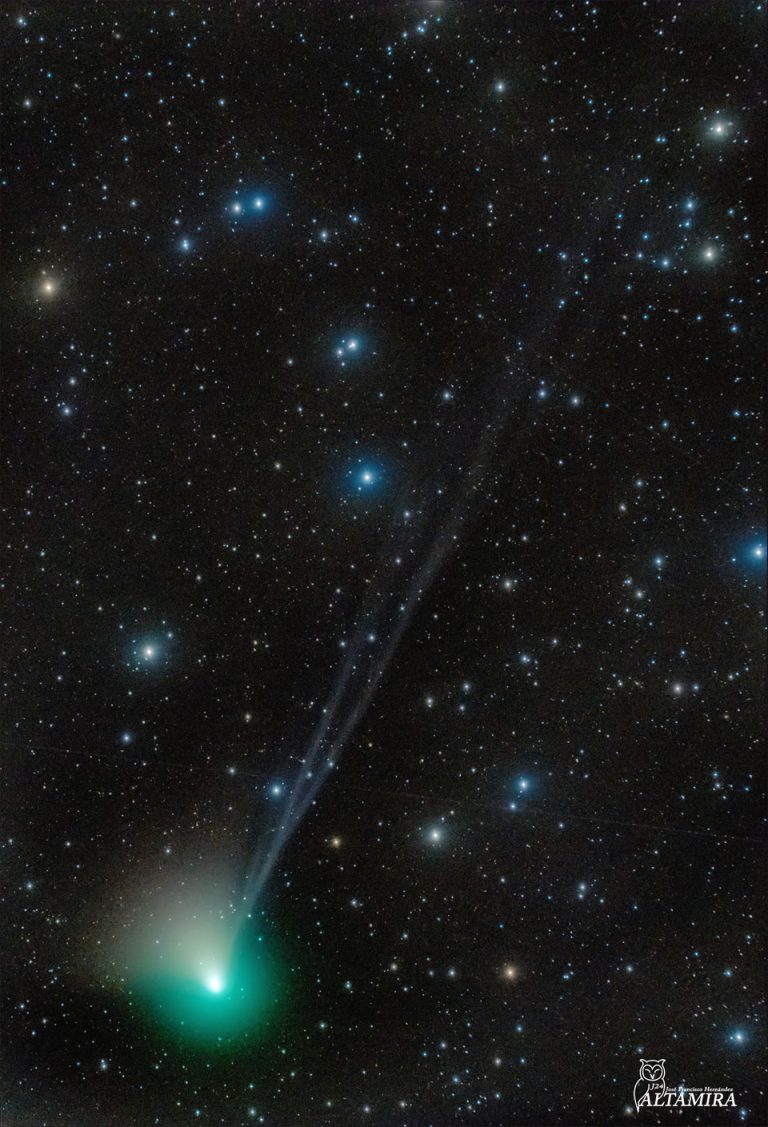御夫AE星和火焰恒星云
2023年3月1日 The Flaming Star Nebula Image Credit & Copyright: Thomas Röell Explanation: Is star AE Aurigae on fire? No. Even though AE Aurigae is named the Flaming Star and the surrounding nebula IC 405 is named the Flaming Star Nebula, and even though the nebula appears to some like a swirling flame, there is no fire. Fire, typically defined as the rapid molecular acquisition of oxygen, happens only when sufficient oxygen is present and is not important in such high-energy, low-oxygen environments such as stars. The bright star AE Aurigae occurs near the center of the Flaming Star Nebula and is so hot it glows blue, emitting light so energetic it knocks electrons away from surrounding gas. When a proton recaptures an electron, light is…




